|
|
 |
 |
 |
|
|
Akira Kurosawa Poster Cards
|
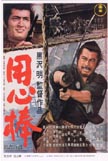 |
Yojimbo (1961)
A masterless samurai, drifting from place
to place, arrives at a small town. He realizes that the town
is controlled by two groups of yakuza. The protagonist comes
up with the idea of making profit by playing the rival groups
off one another. Kurosawa's desire to make a truly entertaining
movie is embodied in this film.
|
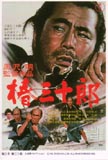 |
Sanjuro (1962)
Based on a story about young samurai who
must confront corruption committed in the castle while their
lord is absent on his way to Edo. Sanjuro Tsubaki, who accidentally
overhears the heated discussion among the rash young samurai,
becomes concerned and comes to their aid. 375 frames (15 seconds)
are used to show the deadly seriousness of Sanjuro's blood-chilling
sword duel with rival Tatsuya Nakadai.
|
| |
|
|
|
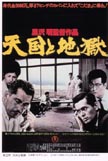 |
High and Low (1963)
An executive of a shoemaking company disputes
management policies with other company executives. As he tries
to mortgage his entire wealth to buy out his company's shares,
his son's close friend, the son of his driver, is mistakenly
kidnapped and an outrageous sum of ransom is demanded. The
filming of the ransom transfer, taken on the Kodama bullet
train dashing at speeds of 100 kph, was a scene which allowed
no retakes. The filming was taken nonstop with a total of
eight cameras. Kurosawa's distinctive multiple camera techniques
are fully exhibited throughout this film.
|
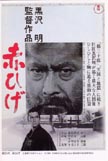 |
Red Beard (1965)
Set in the waning days of the Tokugawa
Shogunate, a young medical student, having finished his studies
at a Dutch school in Nagasaki, pays a courtesy visit to the
Koishikawa clinic which is dedicated to serving the poor.
The clinic is headed by doctor with the alias "Red Beard."
After being informed he is to intern at the clinic, his initial
resistance disappears as he comes to respect Red Beard's character.
Kurosawa made this fim hoping to grip the attention of audiences.
The two long years taken to film this movie is considered
to be the longest in Japanese film history.
|
| |
|
|
|
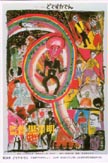 |
Dodesukaden (1970)
"Dodesukaden" is a phrase spoken
by the young mentally challenged boy of the film, Roku-chan.
He roams around his slum dwellings as the driver of an imaginary
train. Kurosawa portrays the suffocating lives of slum dwellers
in an illuminating mood. This, Kurosawa's 24th film, marks
the debut of color in his films.
|
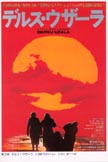 |
Dersu Uzala (1975)
Kurosawa, invited by the Soviet Union,
dirceted this film which was based on the book by an Imperial
Russion Army officer and explorer, Vladimir K. Arseniev. The
film presents the relationship between human beings and the
natural world surrounding them. The fim is set in Siberia
and more than half of the four-year long filming was carried
out in the harsh Siberian environment, which presented many
difficulties.
|
| |
|
|
|
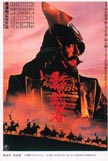 |
Kagemusha (1980)
It is said that during the attempt to
unify the country during the Warring States period in Japan,
the great warrior Shingen Takeda, used a shadow warrior to
deceive his enemies. The tale begins with a thief, in the
line for execution, who is identical to the great warrior.
The international version of this film was completed in collaboration
with Francis Ford Coppola and George Lucas, both of whom regard
Kurosawa as a mentor.
|
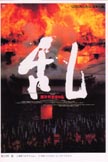 |
Ran (1985)
Inspired by the Shakespearean play King
Lear, this film depicts the tale based on the warring
states picture scroll about Motonari Mouri and his three sons.
The production adapted Noh styles and the display of gorgeous
costumes represent the meticulous attention that Kurosawa,
73, displayed in the making of this film.
|
| |
|
|
|
 |
Dreams (1990)
An omnibus which sweeps you to the world
of dreams. The eight dream segments present a multitude of
stories and characters: a secret wedding procession of masked
foxes, a fairy in a peach tree with Japanese Hina dolls, a
mythical snow enchantress, ghosts of departed soldiers, a
young art student who slips into a Van Gogh painting, a radiation
poisoned metropolis and a red Mt. Fuji, the dialog between
a man and ogre living in a post-nuclear world, and an old
man and the inhabitants of a village with watermills surrounded
by nature's beauty. Each dream portrays a fantasy created
by Kurosawa. Steven Spielberg collaborated in the making of
this film along with George Lucas' ILM handling the special
effects.
|
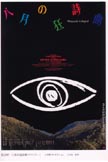 |
Rhapsody in August (1991)
Based on an idea from the book Nabe
No Naka by Kiyoko Murata, the story tells of a grandmother
who cannot tell the difference between reality and illusions.
Her grandchildren, living in the city, spend summer vacation
at her house in Nagasaki. Through this experience, the children
come to undestand the war. The film's message is about the
tragedy of nuclear weapons and was made possible with the
collaboration of Richard Gere when he met Kurosawa during
a publicity tour in Tokyo.
|
| |
|
|
|
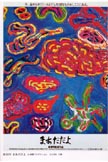 |
Madadayo (1993)
Kurosawa's last film was made when he
was 83. It focuses on the heartwarming relationship between
Hyakken Uchida and his students. The lyrics of a children's
hide and seek game are interwoven in many of the film's scenes.
The lyric "Mo ii kai," literally "Are you ready
(to move on to the other world)," has Uchida answering,
"Madadayo" (No, not yet). The lyricism interwoven
in the film scenes convey a final heartwarming message from
Kurosawa.
|
|
|
|
|
|
|
